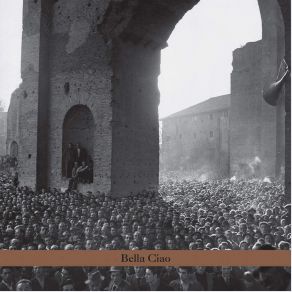Bella Ciao
Download links and information about Bella Ciao by Barbez. This album was released in 2013 and it belongs to Jazz, Rock, World Music, Latin, Alternative, Songwriter/Lyricist, Jewish Folk genres. It contains 11 tracks with total duration of 41:06 minutes.

|
|
|---|---|
| Artist: | Barbez |
| Release date: | 2013 |
| Genre: | Jazz, Rock, World Music, Latin, Alternative, Songwriter/Lyricist, Jewish Folk |
| Tracks: | 11 |
| Duration: | 41:06 |
| Buy it NOW at: | |
| Buy on iTunes $9.99 | |
| Buy on Amazon $9.49 | |
| Buy on iTunes $9.99 | |
Tracks
[Edit]| No. | Title | Length |
|---|---|---|
| 1. | Shema Koli | 5:20 |
| 2. | Echa Yasheva Vadad | 2:55 |
| 3. | Yoshev Beseter Elyon | 5:06 |
| 4. | Et Shaare Ratzon | 3:39 |
| 5. | Mizmor Leasaf | 4:58 |
| 6. | Yedid Nefesh | 1:11 |
| 7. | Keter Ittenu | 2:25 |
| 8. | Kamti Beashmoret | 3:59 |
| 9. | Bella Ciao | 4:23 |
| 10. | Umevi Goel | 5:15 |
| 11. | Channun Kerov Rachamav | 1:55 |
Details
[Edit]After eight years, Barbez guitarist and conceptualist Dan Kaufman revives the band name for Bella Ciao. Though the same players were on 2007's Force of Light, it was issued as his. And like it, this date revolves around themes of light, the Holocaust, resistance, and the senseless persecution and attempted extermination of the Jews, though this time its focus shifts to the Roman Jewish community and to the Italian partisan resistance during the Nazi occupation. As is always the case with Barbez, history plays an important musical role, here it is that of the Roman Jews, the city's longest continuing residents, dating back more than 2,000 years, and their culture is separate from that of other European Jewish traditions including the Ashkenazi and the Sephardim. Kaufman wrote all but two of the pieces here; they were based on Roman Jewish liturgical melodies, and shot through with rock, vanguard composition, improvisation, cinematic notions, and modern chamber jazz. More than on any other Barbez recording, these 11 pieces are "songs." They have recognizable structures, choruses, melodies, and conclusions. The band — Kaufman on guitars; Pamelia Kurstin on Theremin; violinist Catherine McRae; Peter Hess on clarinets; Danny Tunick on piano, marimba, and vibes; bassist Peter Lettre, and drummer John Bollinger — have gelled as a unit. So enigmatic and organic is their engagement in the process of weaving this music from history and mystery in collective imagination, it feels like an evolutionary sonic organism. "Et Sharre Ratzon," with its shimmering minor-key rock, liturgical tropes, and classical schemata, features vocals by actress Fiona Templeton, who recites a Pier Paolo Pasolini poem, "The Resistance and Its Light" within it. (For Kaufman, "light" is an obsession, a constant notion whose influence reaches beyond music). Templeton also recites Alfonso Gatto's elegy "Anniversary" about the resistance inside "Mizmor Leasaf," in which Barbez evokes the Spaghetti Western soundtrack tradition à la Ennio Morricone, Stelvio Cipriani, and Bruno Nicolai. A surf guitar meets lonesome clarinets and rumbling tom-toms, creating drama that underscores the lyric's conviction. The title track is a traditional work, but Kaufman rearranges it thoroughly, retaining the thread of its central melody and infuses it with dissonant modal rock; it features vocals by Faun Fables' Dawn McCarthy. Given the Jews' enduring Roman history, their influence on Italian music—especially before the Papal Bull of the 16th century which ghettoized them until the late 19th—is at least implied; some of these sacred ceremonial melodies are ancient, pre-classical, yet co-exist inside normative classical Roman harmony; it signifies and is signified by them. The later song forms on Bella Ciao are carefully composed to leave the question open, and are executed with such force as to create fissures between the various combinative musics. In the words of Leonard Cohen, another well-known Jewish composer who shares Kaufman's aforementioned obsession, between these cracks is, "where the light gets in." Bella Ciao's aesthetic and historic concerns — not to mention poetic practice — aside, make for compulsive listening.